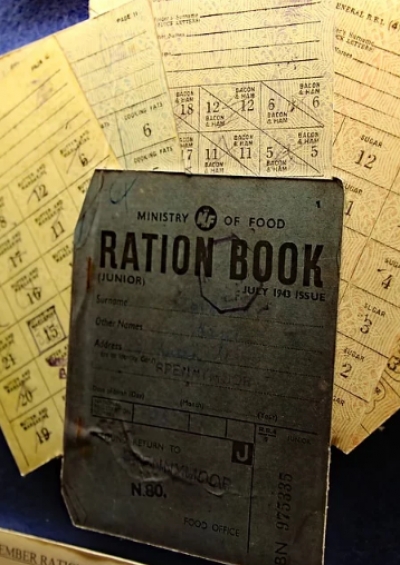COVID 19: Reflections on the “War” Analogy
Rhetoric aside, what are the analytical parallels – and differences — between today’s extraordinary pandemic-related economic policies and the circumstances during or after a major war?
April 3, 2020

In political parlance, the “war“ analogy that is used ever more often in fighting the COVID 19 pandemic does highlight both the serious nature of the challenge and the need to collectively focus on containing the pandemic in order to save lives.
Not so quick
As a German, however, I am reluctant to resort to any “war” vocabulary or analogy. But given the gravity of the situation and to assess the relevance of the “war” analogy in fighting the pandemic, I do believe it is vital to make an exception.
What then are the parallels between today’s extraordinary economic policies and the circumstances during or after a major war?
Three parallels are obvious
Three parallels to an economy on a war footing are obvious today:
1. Governments are intervening heavily into daily lives and economic activities of their citizens to focus on one collective priority, in this case to contain the spread of the coronavirus.
2. Government spending and fiscal deficits are surging while private economic activity not geared towards the collective effort is plunging, at least temporarily.
3. After the collective effort is over, the return to a more normal pattern of economic activity will pose some significant challenges.
What about the aftermath?
But does that mean that, once the pandemic is fading, the return towards more normal will be marred by the economic problems that often beset countries in the wake of a major war?
Probably not. In this context, the differences are starker than the partial parallels.
1. In countries ravaged by a major war such as those in Europe and parts of Asia in the first half of the last century, parts of the physical capital and infrastructure were destroyed.
However, after the COVID 19 pandemic has subsided, the factories and infrastructure will still be there. Factories can be switched on again once the restrictions on activity have been lifted and supply chains have been activated again.
2. Wars are often followed by a bout of inflation as wartime price controls are lifted (for instance, in major parts of Europe after WWII). And/or the monetary financing of the war effort contributes to a subsequent inflationary boom (as was the case to some extent in the United States at the tail end of the Vietnam War).
This time, governments are not artificially suppressing inflation through major price controls that would then have to be lifted afterwards. Amid today’s parallel drop in supply and demand, economies are not facing generalized shortages that would create major upward pressures on the price level.
Inflation unlikely
3. While central banks are now expanding their balance sheets massively, the liquidity injections into the financial system are unlikely to cause any significant surge in inflation for the next few years.
In the wake of the current crisis, households, companies and financial institutions will likely want to hold more precautionary balances than before, mopping up the extra central bank liquidity. One can expect consumers to raise their savings rate rather than to embark on an inflationary spending spree.
4. During a protracted major war, the structure of production is geared heavily towards specific goods (weapons) and services (military and support for the military) that will mostly not be needed any longer thereafter.
The demobilization of the armed forces and the retooling of production are part and parcel of a most beneficial but initially disruptive structural change.
A smaller transition
Once today’s pandemic is subdued, economies will encounter some such issues upon scaling back the medical effort. But they will do so on a much smaller scale than the transition from a war footing to a post-war civilian economy.
The activities that are being switched off in the current economic plunge can and will largely be switched on again thereafter. Almost all of these activities will still be needed once restrictions are lifted step by step.
The return to pre-corona patterns of activity is much less of a challenge than a genuine transition from a war to a peace economy.
Of course, the pandemic and the lockdowns will almost certainly trigger some lasting structural changes, for instance towards online shopping and more flexible working patterns including more stints in the home office.
But these changes will cause hardly any disruption serious enough to cause major damage on a macroeconomic scale. Of course, they will probably be quite relevant for individual sectors.
Limited insights
While the “war“ analogy certainly concentrates the (collective) mind, it offers only limited insights into the likely economic outlook for the period thereafter.
Having said that, two parallels may hold, though:
1. After a war, governments often play a greater role in the economy than before, often with expanded welfare programs. That will likely be the case after the pandemic as well.
Expect more investment and spending on healthcare and on precautions against a new pandemic and other disasters. More countries may copy the German “Kurzarbeitergeld” scheme of subsidising temporary underemployment on the job, as some have already done.
Those countries may strengthen other so-called automatic stabilizers and pursue more active fiscal policies. They will also likely take a more strategic approach to industrial policy.
2. Extraordinary circumstances elicit extraordinary results. A crisis can be the mother of invention.
Expect the corona shock to spur and spread innovations in many fields ranging from a more efficient use of labor and communications technology to increased use of 3D printing and advanced robotics, to name a few obvious candidates.
With luck, this could show up in a measurable improvement in productivity growth in a while.
Takeaways
Unlike after a war, after the COVID 19 pandemic has subsided the factories and infrastructure will still be there. Factories can be switched on again.
Unlike in a war, governments are not artificially suppressing inflation through major price controls that would then have to be lifted afterwards.
The return to pre-corona patterns of activity is much less of a challenge than a genuine transition from a war to a peace economy.
After a war, governments often play a greater role in the economy than before. That will likely be the case after the pandemic.
The corona shock will lead to innovations in many fields -- efficient use of labor and communications technology, increased use of 3D printing and advanced robotics.
